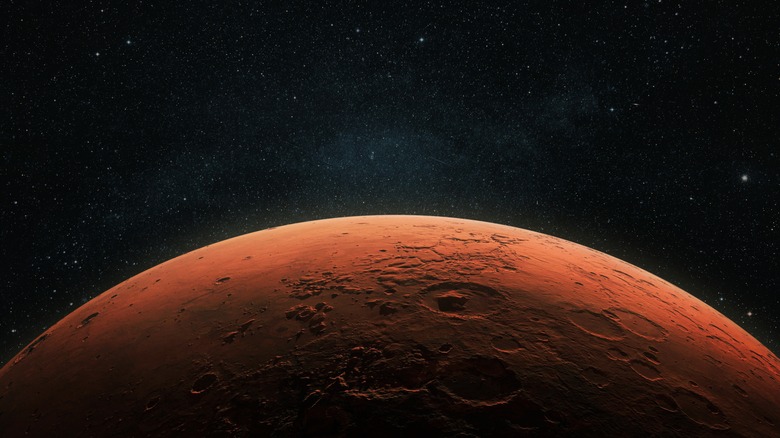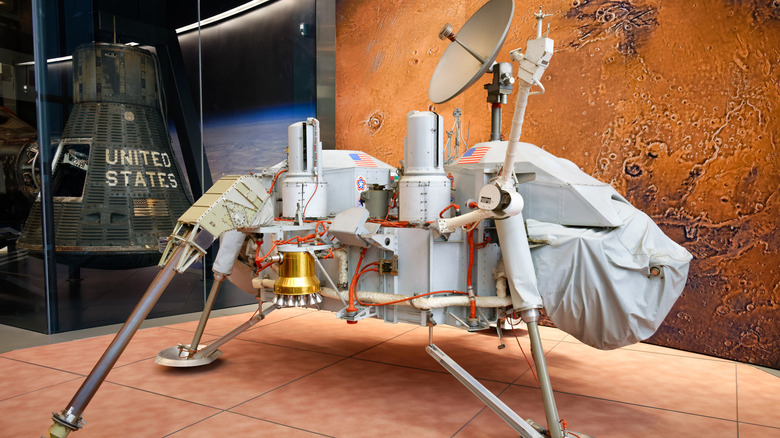How A NASA Experiment Might Have Destroyed Life On Mars
The search for extraterrestrial life has birthed more theories, conspiracies, and sci-fi stories than any other scientific endeavor, and the evidence for its existence seems to be steadily mounting. In our quest to find other lifeforms, we have continuously turned our eyes to our planetary neighbor, Mars. The possibility of Martian life has been a steady presence in fiction, but there is a good deal of evidence to suggest that it was once a reality. There are traces of canals (and climate change) on Mars, suggesting one-time rivers, and scientists even found a rock in Indiana with proof that Mars had water. Water is a promising sign for potential life, but with Mars now barren, we've been left to assume that any life it ever harbored died out long ago. However, that might not be the case at all, according to a bold proposal.
In a September 2024 commentary published in Nature Astronomy, astrobiologist Dirk Schulze-Makuch of the Technical University Berlin proposes that we already found life on Mars, but that a NASA experiment accidentally destroyed the only sample of it we had. Schulze-Makuch points to the Viking Project, which sent two landers to Mars in the 1970s with the purpose of searching for life on Mars. To date, it remains the only time that humans have actually tested a planet for signs of life. In that process, the Viking landers detected trace organic compounds on Mars. However, after subsequent tests found no such evidence, NASA determined that it was actually contamination from Earth. But what if they were wrong?
How NASA might have killed a sample of Martian life
Both of the Viking landers bore equipment designed to test the Martian soil for organic compounds. The first few experiments did turn up evidence of organic material, but in subsequent tests, the traces vanished. One of the experiments performed was a gas chromatograph-mass spectrometer (GCMS), which can detect individual ions in a soil sample to determine what chemical compounds it contains. The Viking GCMS revealed traces of chlorinated organic substances, organic compounds containing the element chlorine. This perplexed NASA researchers, as chlorine wasn't expected to show up in any organic material from Mars. They thus determined that the sample must have been contaminated by materials carried by the lander from Earth.
However, in 2008, the Phoenix lander found chlorine on Mars as well. So did two other rovers, proving that the compound is endemic to Mars. The Viking test samples might not have been contaminated at all, but rather inhabited by some form of microbial life. But then, why did the traces of organic material disappear after the first tests were done? Dirk Schulze-Makuch proposes two possibilities. The GCMS involved heating the soil sample, which may have killed the microbes. Alternatively, the microbes may have been killed by another experiment that mixed the soil with water. At the time, NASA assumed that water was a necessity for all living organisms, but microbes found in Earth's own desert prove otherwise. In the end, we might have drowned the only lifeforms we've ever found on Mars.

